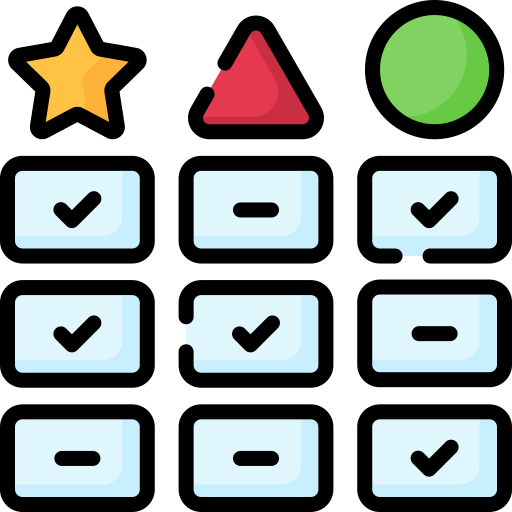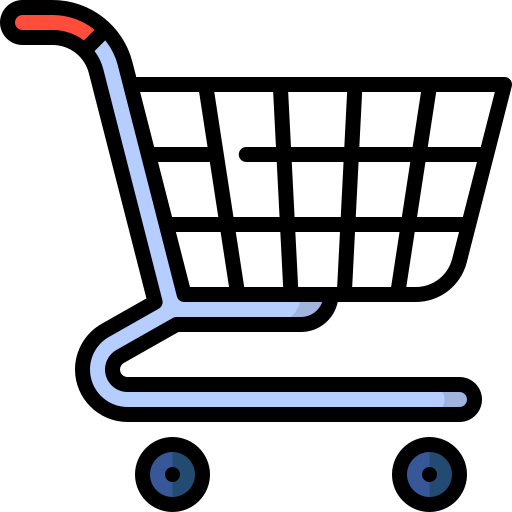
16 Verified Hands-On Reviews
To combat fake reviews we only accept video reviews from verified channels. Each review must show the product and the face of the reviewer.
Expert reviews [16]
- with a score: 7
- without a score: 9
| Highest score by techguide.com.au |
95
|
| Average score based on 16 reviews |
88
|
| Lowest score by The Verge |
70
|
Score distribution:
| 80-100 |
|
| 60-80 |
|
| 40-60 |
|
| 20-40 |
|
| 0-20 |
|




Expert consensus
The DJI Air 3 is a highly regarded drone that offers exceptional camera quality, video capabilities, flight time, range and signal strength, obstacle avoidance, and portability, making it suitable for professional photographers and videographers.
The DJI Air 3 is a highly regarded drone that offers exceptional camera quality, video capabilities, flight time, range and signal strength, obstacle avoidance, and portability. The drone's high-resolution camera capabilities, with 48MP photos and 4K videos at 60fps, make it suitable for professional photographers and videographers.
The gimbal-stabilized dual-camera system ensures smooth and steady footage, even in challenging conditions. The video capabilities, including versatile frame rates and a long video transmission range of up to 20km, make it ideal for capturing high-quality footage from a distance.
The first-person view (FPV) feature provides an immersive flying experience for precise control and stunning aerial footage. The extended flight time of up to 46 minutes allows for more creative possibilities and longer flights, catering to the needs of both professionals and recreational users.
The range and signal strength of the drone are highly regarded, with fast GPS connection and the ability to transmit a 1080p/60fps live feed at a distance of up to 20km. The comprehensive obstacle avoidance system, with 360-degree coverage and advanced technology, ensures the drone can detect and avoid obstacles effectively.
The drone's portability and foldable design make it easy to transport and store, making it suitable for users who prioritize mobility and convenience. Overall, the DJI Air 3 is a versatile and high-performing drone that is well-suited for professional photography, videography, aerial exploration, and capturing cinematic shots.
Camera Quality
The DJI Air 3 is praised for its high-resolution camera capabilities and excellent image stabilization, making it a top choice for professional photographers and videographers.
The DJI Air 3 is praised for its high-resolution camera capabilities, with both cameras capable of capturing 48MP photos and recording 4K videos at 60fps. The cameras support 10-bit D-Log M color mode, allowing for professional-grade photos and videos in various environments and lighting conditions.
The camera features a 1/1. 3-inch sensor, known for its excellent image quality, and utilizes a gimbal-stabilized dual-camera system for excellent image stabilization capabilities. The gimbal helps to eliminate unwanted camera shake and vibrations, ensuring smooth and steady footage even in challenging conditions.
However, there have been complaints about the gimbal cover design, with some users finding it difficult to attach. Overall, the DJI Air 3 is highly regarded for its camera quality and is suitable for professional photographers and videographers looking to capture high-quality imagery.
What is the resolution of the camera of the DJI Air 3?
Based on 5 quotes from 3 sources [show quotes and sources]
What is the sensor size of the camera of the DJI Air 3?
Based on 11 quotes from 7 sources [show quotes and sources]
What are the image stabilization capabilities of the camera of the DJI Air 3?
Based on 9 quotes from 4 sources [show quotes and sources]
Is there a gimbal available for the DJI Air 3?
Based on 2 quotes from 1 sources [show quotes and sources]
Video Capabilities
The DJI Air 3 drone has received positive reviews for its high-quality 4K video capabilities, versatile frame rates, long video transmission range, and immersive first-person view feature.
The DJI Air 3 has received positive reviews for its video capabilities. It offers a maximum video resolution of UHD 4K, allowing for high-quality footage. The drone supports various frame rates, including 24, 25, 30, 48, 50, and 60 frames per second, providing flexibility for different shooting scenarios.
The Air 3 also stands out for its video transmission range. With the O4 video transmission system, it can transmit video up to 20 km (12 miles) according to multiple expert reviews. This long-range transmission capability allows users to capture footage from a distance and explore vast areas.
The first-person view (FPV) feature of the DJI Air 3 is another highlight. Users can experience real-time live video feed from the drone's perspective through the DJI Fly app on their mobile devices. This immersive flying experience enables precise control and the ability to capture stunning aerial footage.
Overall, the DJI Air 3 is praised for its 4K video recording capabilities, versatile frame rates, long video transmission range, and FPV feature. It is suitable for various use cases, such as professional videography, aerial photography, and capturing cinematic shots.
What is the maximum video resolution of the DJI Air 3?
Based on 6 quotes from 4 sources [show quotes and sources]
What frame rates are supported by the DJI Air 3?
Based on 6 quotes from 5 sources [show quotes and sources]
What is the video transmission range of the DJI Air 3?
Based on 8 quotes from 7 sources [show quotes and sources]
Does the DJI Air 3 offer first person view?
Based on 5 quotes from 4 sources [show quotes and sources]
Does the DJI Air 3 support 4K video recording?
Based on 8 quotes from 6 sources [show quotes and sources]
Flight Time
The DJI Air 3's extended flight time of up to 46 minutes is a significant improvement over its predecessor, providing professional photographers and videographers with ample time to capture high-quality footage and offering more flexibility for recreational users.
The DJI Air 3 has a maximum flight time of up to 46 minutes, which is a significant improvement over its predecessor. This extended flight duration allows pilots to explore their surroundings and capture the perfect shot during a single flight. The longer flight time is especially beneficial for professional photographers and videographers who need ample time to capture high-quality footage or images.
It also provides more flexibility for recreational users who want to enjoy longer flights and explore larger areas. Additionally, the DJI Air 3's batteries are not interchangeable with other DJI drone models, so it is important to use the specific batteries designed for this model. Overall, the DJI Air 3 offers an impressive flight time that caters to the needs of both professional and recreational users.
What is the maximum flight time of the DJI Air 3?
Based on 14 quotes from 10 sources [show quotes and sources]
How long does it take to recharge the batteries of the DJI Air 3?
Based on 14 quotes from 11 sources [show quotes and sources]
Are the batteries of the DJI Air 3 interchangeable?
Based on 5 quotes from 4 sources [show quotes and sources]
Range and Signal Strength
The DJI Air 3 offers three remote control options and has a maximum control range of up to 20 kilometers, making it highly praised for its range and signal strength.
The DJI Air 3 offers three remote control options: the basic DJI RC-N2 Controller, the upgraded DJI RC 2 Controller with a built-in screen, and the DJI RC-N2 Controller with Smartphone, which allows users to attach their smartphones for control. The maximum control range of the DJI Air 3 is up to 20 kilometers (12 miles), although this may be limited by regional regulations.
Experts praise the improved transmission technology of the drone, with fast GPS connection and the ability to transmit a 1080p/60fps live feed at a distance of up to 20km. The DJI Air 3 comes with GPS positioning for enhanced flight stability. Factors that can affect the control range and signal strength include antenna design, the transmission system, environmental factors, and interference from other devices.
Overall, the DJI Air 3 is highly regarded for its range and signal strength, making it suitable for various use cases such as long-distance aerial photography, videography, and exploration.
What are the remote control options of the _ENTITY?
Based on 9 quotes from 7 sources [show quotes and sources]
What is the maximum control range of the DJI Air 3?
Based on 4 quotes from 4 sources [show quotes and sources]
What do the experts say about the signal strength of the DJI Air 3?
Based on 5 quotes from 5 sources [show quotes and sources]
Does the DJI Air 3 come with GPS?
Based on 6 quotes from 5 sources [show quotes and sources]
What factors can affect the control range and signal strength of the DJI Air 3?
Based on 3 quotes from 1 sources [show quotes and sources]
Obstacle Avoidance
The DJI Air 3 drone is highly praised for its comprehensive obstacle avoidance system, featuring multiple sensors and advanced technology to detect and avoid obstacles from all directions.
The DJI Air 3 drone is highly praised for its comprehensive obstacle avoidance system. It features multiple sensors on the front, back, sides, and bottom of the drone, providing 360-degree environmental awareness. These sensors, along with fisheye lenses and 3D TOF sensors, allow the drone to detect and avoid obstacles from all directions.
The obstacle avoidance system on the DJI Air 3 is considered highly effective and offers a wide range of coverage. It uses advanced technology, including DJI's Advanced Pilot Assistance System (APAS) 5. 0, to actively avoid and smoothly bypass obstacles. The APAS 5. 0 technology calculates and adjusts the drone's flight path to find the best route to avoid potential collisions.
The DJI Air 3's obstacle avoidance system is a significant upgrade from its predecessor, the Air 2S, which only provides four-way obstacle avoidance. The 360-degree coverage and effectiveness of the obstacle avoidance system make the Air 3 a valuable tool for novice pilots or when flying in challenging environments.
While the obstacle avoidance system is highly capable, it's important to exercise caution and be aware of your surroundings while flying. The obstacle avoidance features are disabled in Sport mode.
Overall, the DJI Air 3's obstacle avoidance system is praised for its comprehensive coverage and effectiveness in detecting and avoiding obstacles. It provides a valuable safety net for pilots and is particularly useful in challenging flying conditions.
What obstacle avoidance sensors are included in the DJI Air 3?
Based on 17 quotes from 11 sources [show quotes and sources]
What is the range and effectiveness of the obstacle avoidance system on the DJI Air 3?
Based on 10 quotes from 7 sources [show quotes and sources]
Does the DJI Air 3 have the ability to detect and avoid obstacles in all directions?
Based on 20 quotes from 10 sources [show quotes and sources]
Portability
The DJI Air 3 is highly praised for its portability and ease of transportation, with its foldable design and compact dimensions making it convenient to store and carry in a travel bag or backpack.
The DJI Air 3 is praised for its portability and ease of transportation. Its foldable design allows for convenient storage and transportation, with dimensions of 8. 1 x 3. 9 x 3. 6 inches when folded. Reviewers mention that the drone can be easily tucked away in a travel bag along with the controller and spare batteries.
The drone is compared to the size of a running shoe, indicating that it may not fit comfortably in a back pocket while cycling but can still be carried in a bag or backpack. Additionally, the Air 3 Fly More kit includes an elegant shoulder bag that neatly arranges all the components, making it compact and convenient for travel.
Overall, the DJI Air 3 is highly regarded for its portability and ease of transportation, making it suitable for users who prioritize mobility and convenience.
What are the dimensions and weight of the DJI Air 3?
Based on 13 quotes from 9 sources [show quotes and sources]
How easy is it to transport the DJI Air 3?
Based on 6 quotes from 4 sources [show quotes and sources]
Does the DJI Air 3 come with a carrying case or bag for easy transportation?
Based on 3 quotes from 3 sources [show quotes and sources]

Position in ranking
We maintain a monthly ranking that sums up expert recommendations for all video drones.
| Rank | Change | Price | Video Drone |
CNET
|
T3
|
Digital Camera World
|
BestReviews
|
WIRED
|
PCMag
|
Man of Many
|
Wirecutter
|
TechRadar
|
Tom's Guide
|
|---|---|---|---|---|---|---|---|---|---|---|---|---|---|
|
1
|
- | $1400 |
 DJI Mini 4 Pro
DJI Mini 4 Pro
The DJI Mini 4 Pro is a compact drone that offers exceptional camera quality, impressive video capabilities, a long flight time, a reliable signal connection, effective obstacle avoidance, and excellent portability, making it a recommended choice for those looking for a compact drone with advanced features.
|
-
|
1
|
1
|
-
|
4
|
1
|
2
|
-
|
1
|
2
|
|
2
|
- | $2199 |
 DJI Mavic 3 Pro
DJI Mavic 3 Pro
The DJI Mavic 3 Pro is a highly praised drone that offers excellent camera quality, impressive video capabilities, extended flight time, strong range and signal strength, advanced obstacle avoidance, and portability, making it a powerful and versatile tool for professional photography and videography.
|
-
|
5
|
5
|
3
|
5
|
3
|
-
|
2
|
3
|
-
|
|
3
|
- | $1099 |
 DJI Air 3
DJI Air 3
The DJI Air 3 is a highly regarded drone that offers exceptional camera quality, video capabilities, flight time, range and signal strength, obstacle avoidance, and portability, making it suitable for professional photographers and videographers.
|
-
|
-
|
2
|
-
|
1
|
2
|
-
|
1
|
-
|
-
|
|
4
|
+7 | Check price |
 DJI Air 3S
DJI Air 3S
|
-
|
-
|
-
|
-
|
-
|
-
|
1
|
-
|
4
|
1
|
|
5
|
-1 | Check price |
 Autel Evo Lite Plus
Autel Evo Lite Plus
The Autel Evo Lite Plus is a highly praised drone that offers impressive camera quality, video capabilities, flight time, range and signal strength, obstacle avoidance, and portability, making it suitable for professional-grade aerial photography and videography, as well as for travel and outdoor activities.
|
-
|
-
|
6
|
-
|
6
|
5
|
-
|
5
|
5
|
-
|
|
6
|
+1 | $1199 |
 DJI Avata 2
DJI Avata 2
|
-
|
4
|
-
|
-
|
-
|
8
|
5
|
4
|
8
|
-
|
|
7
|
+3 | $1799 |
 DJI Mavic 3 Classic
DJI Mavic 3 Classic
The DJI Mavic 3 Classic is a highly praised drone that offers excellent camera quality, impressive video capabilities, a long flight time, advanced obstacle avoidance, and portability, making it a top choice for professional videographers and photographers.
|
-
|
2
|
10
|
-
|
-
|
-
|
3
|
-
|
-
|
3
|
|
8
|
-3 | $314 |
 DJI Mini 2 SE
DJI Mini 2 SE
|
-
|
-
|
9
|
1
|
-
|
-
|
-
|
-
|
2
|
-
|
|
9
|
-3 | $419 |
 DJI Mini 3
DJI Mini 3
The DJI Mini 3 is a compact and lightweight drone with excellent camera quality and advanced stabilization features, making it ideal for adventurers and travelers who want to capture stunning aerial footage on the go.
|
-
|
-
|
4
|
-
|
-
|
4
|
-
|
3
|
-
|
4
|
|
10
|
+3 | $199 |
 DJI Neo
DJI Neo
|
-
|
-
|
-
|
-
|
-
|
7
|
4
|
-
|
11
|
5
|
|
11
|
-3 | Check price |
 Autel Evo Nano Plus
Autel Evo Nano Plus
The Autel Evo Nano Plus is a highly praised drone that offers a high-quality camera experience, impressive video capabilities, reliable flight performance, comprehensive obstacle avoidance, and excellent portability.
|
-
|
6
|
-
|
-
|
-
|
6
|
-
|
-
|
9
|
9
|
|
12
|
-3 | $399 |
 HoverAir X1
HoverAir X1
|
-
|
3
|
3
|
-
|
-
|
-
|
-
|
-
|
-
|
6
|
|
14
|
+2 | $2199 |
 DJI Mavic 3
DJI Mavic 3
The DJI Mavic 3 is a highly praised drone that offers exceptional camera quality, impressive video capabilities, an extended flight time, strong range and signal strength, effective obstacle avoidance, and excellent portability, making it suitable for a wide range of professional applications.
|
3
|
-
|
-
|
-
|
-
|
-
|
-
|
-
|
6
|
-
|
|
15
|
+2 | Check price |
 Dji Avata
Dji Avata
The DJI Avata drone is highly praised for its camera quality, video capabilities, and portability, making it a top choice for professional photographers and videographers.
|
2
|
-
|
-
|
-
|
-
|
-
|
-
|
-
|
-
|
8
|
|
16
|
+2 | Check price |
 DJI Mini 2
DJI Mini 2
The DJI Mini 2 is a highly recommended drone for capturing high-quality photos and videos, offering impressive camera quality, stable footage, long transmission range, and a compact and portable design.
|
7
|
-
|
-
|
-
|
3
|
-
|
-
|
-
|
-
|
-
|
|
17
|
+2 | $1336 |
 DJI FPV
DJI FPV
The DJI FPV drone is highly praised for its camera quality, video capabilities, flight time, range and signal strength, obstacle avoidance, and portability, making it a versatile and powerful tool for capturing stunning aerial footage.
|
4
|
-
|
-
|
-
|
-
|
-
|
-
|
-
|
-
|
7
|
|
18
|
+2 | $884 |
 DJI Air 2S
DJI Air 2S
The DJI Air 2S is a highly recommended drone for its exceptional camera quality, impressive video capabilities, reliable flight performance, and convenient portability.
|
6
|
7
|
-
|
-
|
-
|
-
|
-
|
-
|
-
|
-
|
|
19
|
-7 | Check price |
 Dji Ryze Tello
Dji Ryze Tello
The DJI Ryze Tello is a beginner-friendly drone with good camera quality and portability, making it suitable for casual photography and videography, but may not meet the needs of professional or advanced users.
|
-
|
-
|
-
|
-
|
7
|
-
|
-
|
-
|
7
|
-
|
| Show all rows | |||||||||||||








